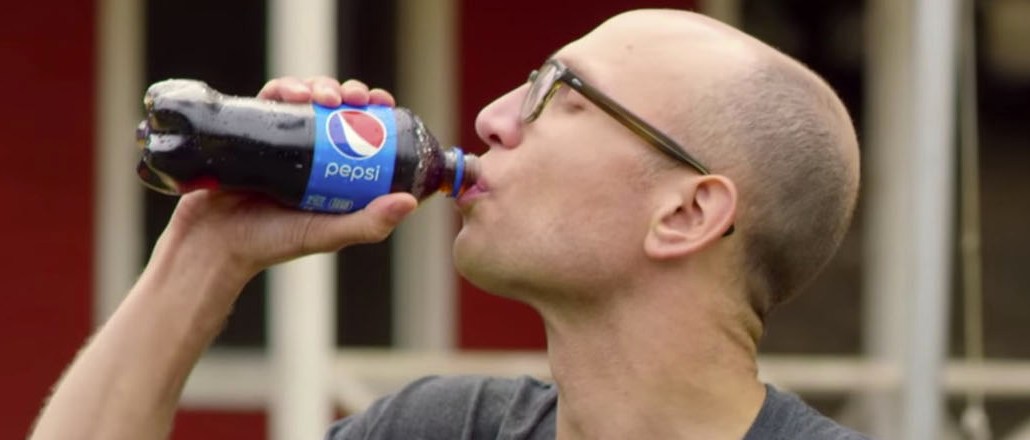Save 50% on a 3-month Digiday+ membership. Ends Dec 5.

This is part of The Digiday List of Innovative CMOs series, featuring a handful of trail-blazing brand marketers who are ahead of the curve and driving the bottom line through digital innovation.
As consumer tastes evolve, they expect more — or different — things from their preferred brands. Few people are more aware of changes in customer demand than PepsiCo North America Beverages CMO Seth Kaufman, who leads the brand’s beverage portfolio of soft drinks, waters, teas and energy drinks in the U.S.

Pepsi is responding to these changes by transforming not just its marketing but also its product portfolio. This month, the brand pledged to cut back on sugar, saying that two-thirds of its single-serving drinks will have 100 or fewer calories by 2025.
“At the end of the day, we have a responsibility to not just our shareholders but also our consumers, to make sure that we’re changing as the world is changing in front of us,” said Kaufman.
On the marketing front, here’s a breakdown of Kaufman’s philosophy for Pepsi.
Merging traditional and new media
A big-time TV spender for years, Pepsi turned its attention to digital real-time campaigns at this year’s Super Bowl, with nearly 40 percent of its investment devoted to digital. This shift mirrors the brand’s overall approach to marketing, which is a heady mix of traditional and new media.
“TV still works, obviously, but how we plug it with digital is becoming more and more important,” said Kaufman. “You can’t separate digital from what happens on air.”
As a part of its “Pepsimoji” campaign, for example, the brand merged emojis and television to create more than 100 different five-second TV and digital spots that were run in contextually relevant times, such as award shows and MLB Games.
“Consumers’ attention spans have changed, and no one is watching television without using a device at the same time,” he said. “So whatever we do on TV needs to be shorter and integrated with other platforms.”
By investing in experiential and influencer marketing
Influencers may be big right now, but Pepsi doesn’t believe in simple product placement, said Kaufman. Pepsi approaches influencers on the basis of a concept it internally calls “LATTE” standing for local, authentic, transparent, traceable and ethical.
When the company launched its new line of crafted sodas called “Stubborn” this summer, for example, it created a content series with Robert Kirkman, the creator of “The Walking Dead” franchise, who talked about how he approaches his craft, with a stubborn insistence on perfection.
The brand has also been investing heavily into experiential efforts. Combating its unhealthy image, after all, is no easy feat and requires a marketing push as much as a real commitment to cutting down sugar. Just last month, it launched Kola House, a kola nut-themed restaurant in New York City’s Meatpacking District. Other examples include on-site activations at key events, including Super Bowl 50, where the brand hosted a 360-degree experience centered on fizz, including actual bubbles, spinning spheres, flavor scent tubes.
“The idea is not in-your-face branding,” he said. “It’s about offering them an experience which they will then share further.”
By encouraging entrepreneurial spirit
Pepsi has a number of internal programs aimed at empowering its talent as well as creating an agile, entrepreneurial and experimental culture. One of them, “PepsiCo Fast Pitch,” is a quarterly program where people in the marketing department can pitch a marketing-related idea to a panel of experts. The winners then get allocated a budget to take the idea to market, with the only rule being that they must do it within three months.
“It breaks down barriers, because they have to work with different partners that they hadn’t worked with before,” he said. “It also creates an energy around the importance of agility, with it having to be deployed in three months.”
Pepsi also has a set of awards called the “Marketing Maven” awards, which celebrate the biggest failures in the marketing department that year, and the takeaways from it. “If you’re thinking about cultivating creativity, you have to look at failure as not something bad but something you can learn from,” he said. “It helps a lot of the junior talent in getting more comfortable to share their ideas.”
By bringing innovation in-house
To remain cutting-edge, brands can no longer outsource innovation. Pepsi is among the many brands bringing more capabilities, including content creation in-house.
Its content studio has started doing a lot of things in-house, including, for example, maintaining the brand’s Instagram page. “Rather than be one step removed and have an agency work on all of our Instagram, we now have a team at the content studio dedicated to the brand,” said Kaufman. “There’s no other way to break down silos and keep it integrated.”
There is also “PepsiCo Creator,” a team within the marketing department that is focused on marketing innovation. Its job is to constantly evaluate new technologies, find new partnerships, test new things and iterate constantly.
“We used to wake up and have to deal with a small vegetable garden of choices, and now, it’s a veritable jungle of choices we have in the marketplace,” said Kaufman. “This team helps us keep pace with all the change.”
More in Marketing

Blended teams: From stopgap to strategic advantage
Blended team members aren’t cheap labor — they’re precision specialists delivering high-impact results.

In Graphic Detail: Inside the growing rift between AI efficiency and audience trust
What follows are five charts that ground where the debate stands as the year winds down.

The chance to win the holiday marketing season has already come and gone, per Traackr’s holiday report
The influencer marketing platform tracked the top brands according to VIT, Traackr’s proprietary metric for visibility, impact and trust.





